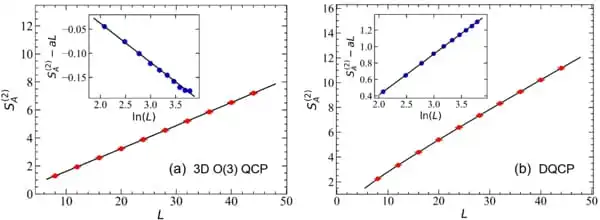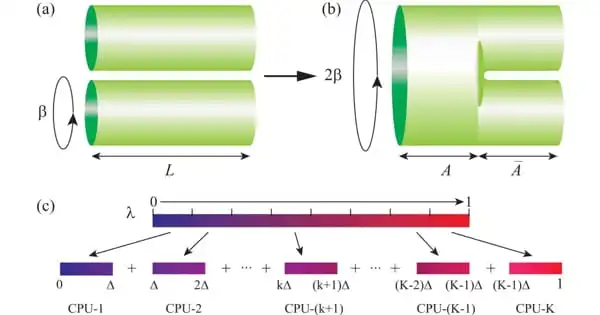A research team from the Department of Physics at the University of Hong Kong (HKU) has devised a new technique to detect entanglement entropy, enabling the investigation of more complete laws in quantum mechanics and bringing the use of quantum materials one step closer to reality. This seminal study was recently published in Physical Review Letters.
Quantum materials are critical in advancing human progress. The scientific and technological communities have been clamoring for more innovative quantum materials with remarkable features.
2D Moire materials, such as twisted bilayer graphene, are playing a significant role in the investigation of novel quantum states, such as superconductivity, which has no electrical resistance. They also contribute to the creation of “quantum computers,” which far exceed the finest supercomputers now available.
However, materials can only reach “quantum state,” i.e. when thermal effects no longer obstruct quantum fluctuations that trigger quantum phase transitions between different quantum states or quantum phases, at extremely low temperatures (near Absolute Zero, -273.15°C) or exceptionally high pressure. Experiments examining when and how atoms and subatomic particles of various substances “communicate and interact freely through entanglement” in quantum state are thus excessively expensive and difficult to carry out.
By ruling out the possibility of a solitary theory defining DQCP, our findings contributed to a new understanding of phase transition theory. Our work will contribute to subsequent advances in the quest for a comprehensive understanding of uncharted region.
Dr. Zheng Yan
The issue is hampered further by the failure of the classical LGW (Landau, Ginzburg, Wilson) framework to characterize some quantum phase transitions known as Deconfined Quantum Critical Points (DQCP). The challenge then becomes whether DQCP realistic lattice models can be found to resolve the DQCP-QCP contradictions. Dedicated research on the subject yields a plethora of numerical and theoretical studies with contradictory outcomes, and a solution remains elusive.
Mr Jiarui ZHAO, Dr Zheng YAN, and Dr Zi Yang MENG of HKU’s Department of Physics achieved a significant breakthrough in resolving the issue by studying quantum entanglement, which is the basic distinction between quantum and classical physics.
The study team created a novel and more efficient quantum algorithm of the Monte Carlo approaches used by scientists to calculate object Renyi entanglement entropy. They measured the Rényi entanglement entropy at the DQCP using this new instrument and discovered that the scaling behavior of the entropy, i.e. how the entropy changes with system sizes, is in strong contrast to the description of traditional LGW types of phase transitions.

“By ruling out the possibility of a solitary theory defining DQCP, our findings contributed to a new understanding of phase transition theory. Our work will contribute to subsequent advances in the quest for a comprehensive understanding of uncharted region” Dr. Zheng Yan stated.
“The discovery has altered our understanding of classic phase transition theory and presents a slew of exciting concerns concerning deconfined quantum criticality. This new tool, which we developed, will hopefully aid in the process of unraveling the enigma of quantum phase transitions, which has perplexed the scientific community for the past two decades “said Mr Zhao Jiarui, the first author of the journal paper and a PhD student who devised the algorithm’s final fixes.
“This discovery will lead to a more broad description of the critical behavior of innovative quantum materials, and is a step closer to the actualisation of quantum material applications, which play a critical role in accelerating human advancement.” Dr. Meng Zi Yang made a remark.
The models
The research team chose two representative models — the J1-J2 model hosting normal O(3) QCP and the J-Q3 model hosting DQCP — to test the algorithm’s efficiency and superior power and to demonstrate the distinct difference between the entanglement entropy of normal QCP and DQCP.
Nonequilibrium increment algorithm
The researchers developed a highly paralleled increment algorithm based on earlier approaches. The primary principle of the technique, is to partition the entire simulation effort into many smaller tasks and then employ enormous CPUs to parallelly perform the smaller tasks, drastically reducing simulation time. This enhanced strategy enabled the researchers to simulate the two previously mentioned models with greater efficiency and data quality.





